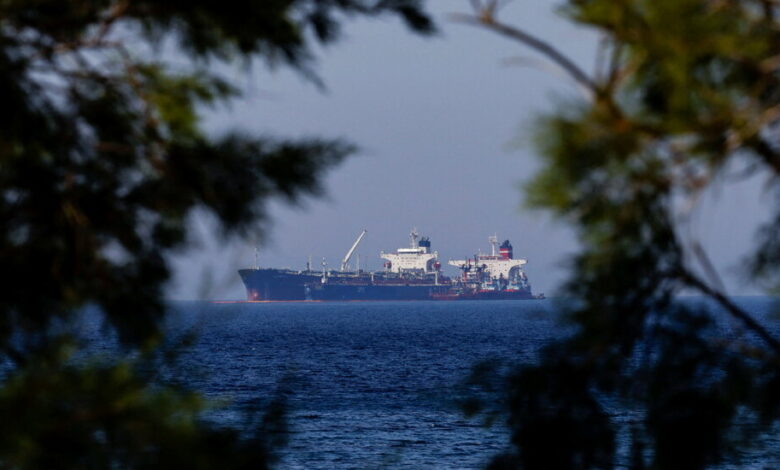Will a Renewed Iran Nuclear Deal Mean Cheaper Energy?

BRUSSELS — As Russia squeezes Europe on supplies of natural gas and Europe readies an embargo on Russian oil, some are looking for help from Iran. That is, of course, if and when Tehran and Washington agree to revive the 2015 nuclear deal, lifting tough economic sanctions on Iran that have limited its ability to export energy.
But even if a deal comes tomorrow, putting it in place will be complicated and phased, and it is likely to take several months before sanctions on Iran are lifted. There may be an early impact on the oil market to soothe nerves, but supplies would come too late to alleviate world markets this winter, experts say.
For Europe, oil is not really the problem. Russia is denying large amounts of natural gas to European countries, which are trying to source it elsewhere. While Iran has lots of natural gas, it uses most of it domestically, including for many automobiles, and it lacks pipelines to Europe or facilities to liquefy natural gas.
“Iran in the short term will have some additional oil exports, but not gas, which is what Europe really needs,” said Simone Tagliapietra, an energy expert at Bruegel, an economic research institution. “I would not bet on Iran to rebalance the global energy market anytime soon.”
Jacob Funk Kirkegaard, an economist with the German Marshall Fund, said that “what Europe needs is gas and there’s no way to get it there from Iran and not in a time frame that matters to anyone this winter.”
Even as European countries scramble to line up alternative energy sources, Western officials insist that their timing on the Iran nuclear deal is not being affected by the energy issue and point out that the price of oil has dropped considerably from its heights this summer.
An influx of Iranian oil on the market could help keep prices down. Some suggest that Iran, which holds the world’s fourth-largest proven oil reserves, could eventually export more than two million barrels a day of crude oil, more than twice estimates of what it exports now.
But oil is easier to ship and disguise than gas, and Russia, which makes much more money from oil than from gas, has continued to pump and sell oil at close to prewar levels. Even the European Union, which has introduced phased sanctions on Russian oil, with numerous exceptions, is buying as much from Russia as it did before the war.
That may change in January, when more sanctions kick in, especially ones banning E.U. operators from financing or insuring oil tankers, which will hit Russia’s ability to export some of its non-pipeline oil. The Biden administration believes that will raise oil prices again, so has instead supported a price cap on Russian energy.
Understand the Iran Nuclear Deal
Understand the Iran Nuclear Deal
A critical stage. Despite recent threats and harsh words, the U.S. and Iran appear on the cusp of restoring the 2015 accord that limited Iran’s nuclear program, though important sticking points remain. Here’s a look at how we got here:
Understand the Iran Nuclear Deal
The 2015 deal. Iran and a group of six nations led by the U.S. reached a historic accord in 2015 to significantly limit Tehran’s nuclear ability for more than a decade in return for lifting sanctions. The agreement was President Barack Obama’s signature foreign policy achievement.
Understand the Iran Nuclear Deal
The U.S. abandons the deal. President Donald J. Trump pulled the U.S. out of the accord in 2018 and reimposed tough sanctions against Iran in hopes of forcing Tehran to renegotiate. Iran responded in part by enriching uranium significantly beyond the limits in the agreement.
Understand the Iran Nuclear Deal
A path back to an accord. President Biden vowed to bring the U.S. back into the deal, and talks in Vienna created a road map for that effort, though challenges have remained: Iran wants the U.S. to lift sanctions first, while the U.S. wants Iran to return to compliance first.
Understand the Iran Nuclear Deal
A new setback. On March 11, a European Union official said that talks on reviving the deal had paused following the invasion. Russia, a signatory to the accord, tried to use final approval of the deal as leverage to soften sanctions imposed because of the war.
Understand the Iran Nuclear Deal
Another try. In August, the European Union presented a “final” proposal for Iran and the United States to consider, one more attempt at restoring the deal. After Iran sent its promised response to the text without raising any major new objections, European officials expressed increasing optimism for the first time in many months that an agreement might be reached.
A nuclear deal that is phased — and that reportedly will include some early waivers for Iran to enable it to sell some of its stored oil — could ease the market by adding more non-Russian oil.
Iran is exporting about 800,000 barrels a day, most of it bought by China, but it could increase output fairly quickly, experts say.
After President Donald J. Trump reimposed sanctions in 2018, the Iranians throttled back production sharply, but handled the shutdowns in a careful way that minimized damage to the fields and should allow them, when the opportunity arises, to restore output rapidly.
“In a matter of three months, we think they could increase production by almost one million barrels a day,” said Homayoun Falakshahi, a senior analyst at Kpler, an energy research firm.
Mr. Falakshahi said that within a few more months Iran was likely to be able to add up to 400,000 barrels a day more, reaching its 2017 production level of 3.8 million barrels a day, up from around 2.5 million currently.
Iran’s oil marketers have also positioned themselves to ramp up sales once sanctions are lifted. Mr. Falakshahi estimates that about 44 million barrels of Iranian crude are already loaded on tankers, mostly in waters near China and Singapore, which could hit markets fast, he said.
Some of these ships may be engaged in ship-to-ship transfers designed to avoid sanctions and obscure where the oil is going, experts note.
An addition of 1.3 million barrels a day is roughly 1 percent of current world demand, but it would make a difference. The Saudi- and Russian-led producers group known as OPEC Plus is producing about 2.7 million barrels a day less than its targets, despite lobbying from the Biden administration and others for increases, according to the Paris-based International Energy Agency.
Bringing Iranian oil back onto the market would make up some of that shortfall and buffer potential declines in Russian production. “Iran could be a source of significant supplies if sanctions were eased, although its return to the market would not happen overnight,” I.E.A. analysts wrote in a recent report.
Analysts at Goldman Sachs said that a return of Iranian supplies would cause them to adjust their forecast of $125 a barrel for Brent crude, the international benchmark, down by $5 to $10 a barrel for 2023.
Some European countries imported significant amounts of Iranian oil before American sanctions were reimposed in 2018, including Italy, France, Spain and the Netherlands, said Ellie Geranmayeh, an Iran expert with the European Council on Foreign Relations. “They may see Iran as a short-term fix.”
But even if Iran does not find early markets for oil in Europe, “it could relieve some of the global pressure on markets to Asia, which could free up some supply to Europe,” she said.
But politics and sanctions are not the only obstacles for Iran’s exports, said Mr. Tagliapietra, the energy expert. There is poor export infrastructure, with no pipelines to the European Union and no plants to make liquid natural gas.
And Iran needs the technical expertise of international oil companies, which are likely to be reluctant to re-enter the country in force until after the 2024 American presidential election, since a Republican president may decide to pull out of the nuclear deal once again and reimpose sanctions.
“Would big companies that were in Iran before, would they go back at that level knowing what may happen in 2024?” Mr. Kirkegaard asked. “I find it hard to believe.”
Saudi Arabia has also hinted that it might cut production if Iran, its longtime rival, mounts a comeback, to ensure higher oil prices.
“OPEC could indeed scale back output once Iranian barrels start hitting the market,” said Helima Croft, head of commodities at RBC Capital Markets, in a recent note to clients. Such a move “could in turn erode the political dividends of doing such a controversial deal for the Biden administration,” she added.
Steven Erlanger reported from Brussels and Stanley Reed from London.




